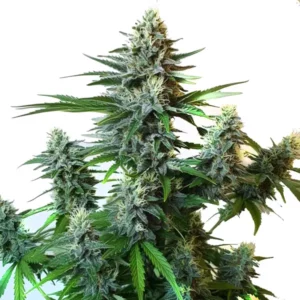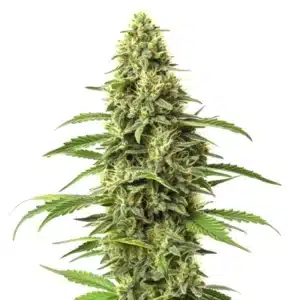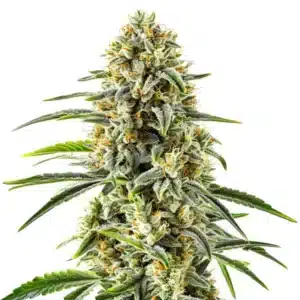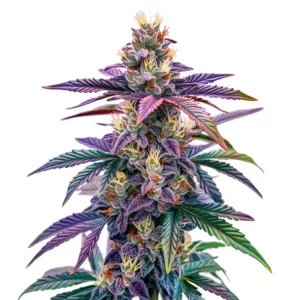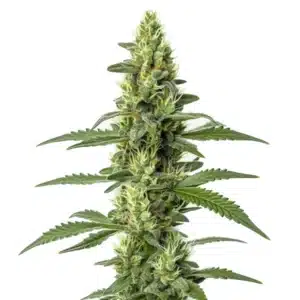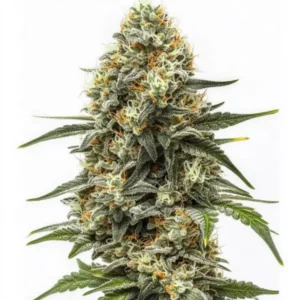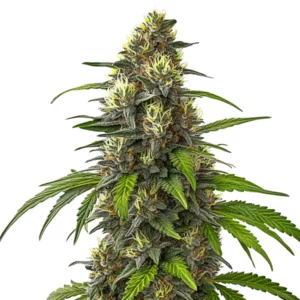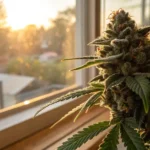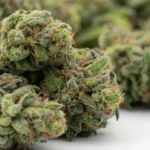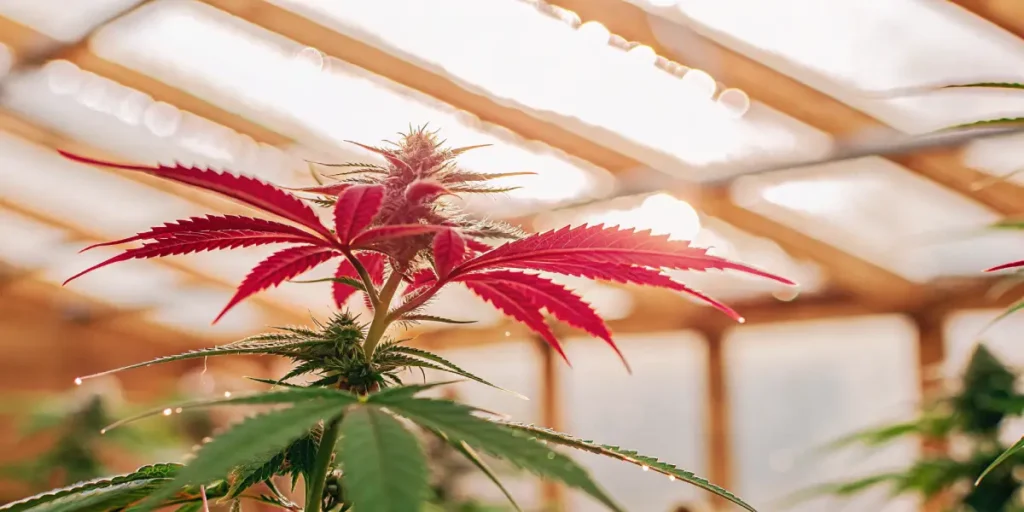
How Autoflowering Strains Handle Transpiration Differently
Autoflowering strains present unique characteristics in their growth process. One such feature is how autoflowering strains handle transpiration differently compared to other cannabis types. Transpiration, the process of water movement through a plant and its evaporation from leaves, stems, and flowers, is crucial for plant health. However, autoflowering strains manage this process uniquely, adapting to diverse environments with ease.
The differences in how autoflowering cannabis handles water loss are rooted in their genetics. Originating from the hardy Cannabis ruderalis species, these strains are accustomed to harsher climates and shorter growing seasons. This genetic background influences how they manage water and nutrients, making them a popular choice for growers in varying environments.
Recommended Strains
Critical Auto
|
|
THC | 10% - 14% (Low) |
|
|
Type | Autoflowering |
|
|
Yield | Low |
|
|
Phenotype | 70% Indica / 30% Sativa |
GG Autoflower F1
|
|
THC | 24% - 28% (High) |
|
|
Type | Autoflowering F1 |
|
|
Yield | High |
|
|
Phenotype | 40% Indica / 60% Sativa |
Autoflowering strains transpiration process is adapted to ensure survival in less-than-ideal circumstances. This adaptation means they use water more efficiently and can thrive with less oversight. This makes them perfect for beginners and those looking to cultivate in areas with challenging conditions.
Transpiration Differences in Autoflowering Cannabis
How autoflowering strains handle transpiration differently is linked to their unique biology and lifecycle. These plants manage water loss in a way that sets them apart from photoperiod strains. They have a naturally quicker growth cycle, which influences how they utilize and conserve water. Their leaves are often smaller and feature a waxy coating, helping to reduce water loss through transpiration. This remarkable adaptability is a remnant of their ruderalis heritage.
Moreover, the effects of autoflowering genetics on transpiration mean they are less susceptible to humidity fluctuations. This can be beneficial in regions with less predictable weather. For instance, the Critical Auto strain from Blimburn Seeds is known for its resilience to environmental changes, making it a reliable choice for growers facing varied climates.
The autoflowering strains transpiration process is not only efficient but also consistent across different growth stages. This consistency allows growers to plan their irrigation and nutrient schedules more accurately, knowing that the plants will maintain their water efficiency regardless of external conditions. It’s another reason why many growers prefer autoflowering strains for their reliability.
Besides to handling humidity well, these strains also exhibit resilience against temperature variations. The effects of autoflowering genetics on transpiration ensure that even in cooler climates, the plants maintain adequate water retention. This adaptability further underscores their suitability for outdoor cultivation, where environmental control is less feasible.
Promos & Deals
Environmental Factors Affecting Autoflowering Transpiration
Environmental conditions play a significant role in how autoflowering cannabis manages water loss. The light cycle does not dictate their flowering, but factors like temperature and humidity still affect their growth and transpiration. In high humidity, these plants may transpire less, conserving water efficiently.
On the other hand, in dry conditions, autoflowering strains like Gorilla Glue Auto F1 from Blimburn Seeds demonstrate remarkable resilience. Their ability to manage water efficiently ensures they remain robust despite water scarcity. This strain’s genetics allow it to thrive where other strains might struggle.
Another important environmental factor affecting autoflowering transpiration is the soil composition. The type of soil used can influence how well these plants manage water. Soils with good drainage properties are preferred, as they prevent waterlogging and promote healthier root systems, which in turn support better water uptake and retention.
Additionally, the presence of wind can impact how autoflowering cannabis manages water loss. Gentle breezes can help regulate transpiration rates by promoting evaporation, while strong winds might increase water loss excessively. Therefore, understanding local wind patterns and providing necessary windbreaks can be crucial for optimizing the growth of autoflowering strains.

Choosing the Right Strain for Your Environment
When selecting autoflowering strains, consider the environmental factors affecting autoflowering transpiration. A strain like Blue Dream Auto is ideal for moderate climates, offering a balance between water management and growth potential. Its genetic makeup allows it to adapt to various growing conditions, making it a versatile choice for many growers.
For those in extremely dry or humid regions, selecting a strain with robust genetics is crucial. Autoflowering strains like Blue Dream Auto can handle these conditions, thanks to their efficient water management capabilities. This adaptability makes them a favorite among seasoned growers and novices alike.
While choosing the right strain, it is also beneficial to consider the intended use of the harvest. Some strains may offer higher yields or different cannabinoid profiles, which can influence your decision based on your personal or commercial goals. Understanding these aspects alongside environmental factors ensures a more fulfilling cultivation experience.
Furthermore, growers should evaluate the available resources such as water supply and grow space. Strains that require minimal intervention and can thrive with limited resources are ideal for those looking to maximize efficiency. How autoflowering strains handle transpiration differently often aligns well with these resource limitations, making them a smart choice for efficient cultivation.
Practical Tips for Growing Autoflowering Strains
To maximize the potential of your autoflowering strains, consider these practical tips. First, ensure your plants have adequate airflow. This helps control humidity and encourages a healthy transpiration process. Proper ventilation can prevent issues like mold, which can thrive in stagnant, humid air.
Next, maintain consistent watering schedules. While autoflowering strains are less demanding, they still benefit from regular care. Overwatering can lead to root problems, while underwatering may stress the plant, impacting its growth and yield.
Another tip is to use quality soil and nutrients tailored for autoflowering strains. The right nutrient balance is crucial in supporting the autoflowering strains transpiration process and overall plant health. Researching and investing in soil amendments and fertilizers that cater to these specific strains can enhance their growth and productivity.
Moreover, employing mulching techniques can help retain soil moisture and regulate soil temperature. This can be particularly beneficial in managing water loss and supporting the strains’ natural ability to handle transpiration differently. Mulching also reduces weed competition, further aiding in the growth of healthy autoflowering plants.

FAQs
What are the benefits of autoflowering strains’ unique transpiration process?
Autoflowering strains’ ability to handle transpiration differently offers several benefits. These plants typically require less water and are more efficient in their use of resources. This efficiency translates to lower maintenance for growers, making them a great choice for beginners.
Additionally, their unique transpiration process allows them to thrive in a variety of environmental conditions. Whether you’re growing in a humid area or a dry climate, autoflowering strains can adapt well, providing consistent yields regardless of external factors.
Another advantage of the autoflowering strains transpiration process is their resistance to common plant diseases. Efficient water management reduces the risk of root rot and other water-related issues, leading to healthier and more resilient plants. This disease resistance further enhances their appeal to cultivators.
Furthermore, the rapid growth cycle of these strains means they can be harvested multiple times a year, depending on the growing conditions. This ability to quickly regenerate provides continuous yields and maximizes the use of available grow space, making them economically viable for both personal and commercial growers.
How do autoflowering genetics influence water management?
The genetics of autoflowering strains have a significant impact on how they manage water. Originating from Cannabis ruderalis, these plants have evolved to survive in harsh climates with limited water availability. This genetic trait makes them highly efficient in water use.
These genetics also contribute to their faster growth cycle, meaning they can complete their life cycle with less water compared to photoperiod strains. This efficient water management makes them an attractive option for growers dealing with water restrictions or challenging environments.
The effects of autoflowering genetics on transpiration extend to their ability to recover from stress. Even if conditions become temporarily unfavorable, these plants can bounce back quickly due to their robust genetic makeup. This resilience is a key factor in their enduring popularity.
Furthermore, these genetic traits enable autoflowering strains to be more forgiving of minor cultivation mistakes. Novice growers benefit from this flexibility, as the plants can withstand occasional lapses in care without significant detriment to overall health and yield.
Can autoflowering strains thrive in unpredictable weather?
Yes, autoflowering strains are well-suited to handle unpredictable weather patterns. Their ability to manage water loss effectively allows them to withstand fluctuations in humidity and temperature. This resilience is a key advantage for growers in regions with variable climates.
Strains like Critical Auto from Blimburn Seeds are particularly adept at thriving in diverse conditions. Their robust genetics ensure they remain productive and healthy, even when faced with less-than-ideal growing environments.
Besides to their adaptability, autoflowering strains often display a remarkable ability to recover from environmental stressors. This trait is particularly beneficial in areas prone to sudden weather changes, ensuring that plants do not suffer long-term damage from short-term anomalies.
Moreover, the compact size of many autoflowering strains makes them less susceptible to physical damage from strong winds or heavy rain. This physical resilience complements their genetic adaptability, providing a comprehensive defense against unpredictable weather conditions.
What environmental factors should be considered when growing autoflowering strains?
When growing autoflowering strains, consider factors such as temperature, humidity, and light exposure. While these plants do not rely on light cycles to flower, maintaining optimal environmental conditions can enhance their growth and yield.
Temperature and humidity control are especially important. Too much humidity can lead to mold, while too little can stress the plant. Ensuring your grow space is well-ventilated and monitored can help mitigate these risks.
Soil quality and pH levels also play a crucial role in the success of autoflowering strains. Selecting soil substrates that match the needs of these plants and monitoring pH levels ensures that nutrient uptake is optimized, further supporting their growth and health.
Additionally, considering the impact of seasonal changes is important. While autoflowering strains are adaptable, planning for seasonal shifts in temperature and light can help maximize yields. Implementing season-specific strategies, such as using grow lights or heaters, can aid in maintaining ideal growing conditions throughout the year.
Why are autoflowering strains recommended for beginners?
Autoflowering strains are recommended for beginners due to their ease of growth and minimal maintenance requirements. Their ability to handle transpiration differently means they require less frequent watering and can adapt to a range of environmental conditions.
For first-time growers, this means a lower risk of common issues like overwatering or environmental stress. These strains offer a forgiving growing experience, allowing novices to achieve successful harvests with less experience or intervention.
Besides to being beginner-friendly, autoflowering strains typically have a compact size, making them suitable for discreet or limited-space growing environments. This feature is advantageous for those who may be cultivating in urban areas or indoors.
Furthermore, autoflowering strains often have a shorter time from seed to harvest compared to photoperiod strains. This quick turnaround time allows novice growers to see results faster, keeping them engaged and motivated to continue their cultivation journey.



